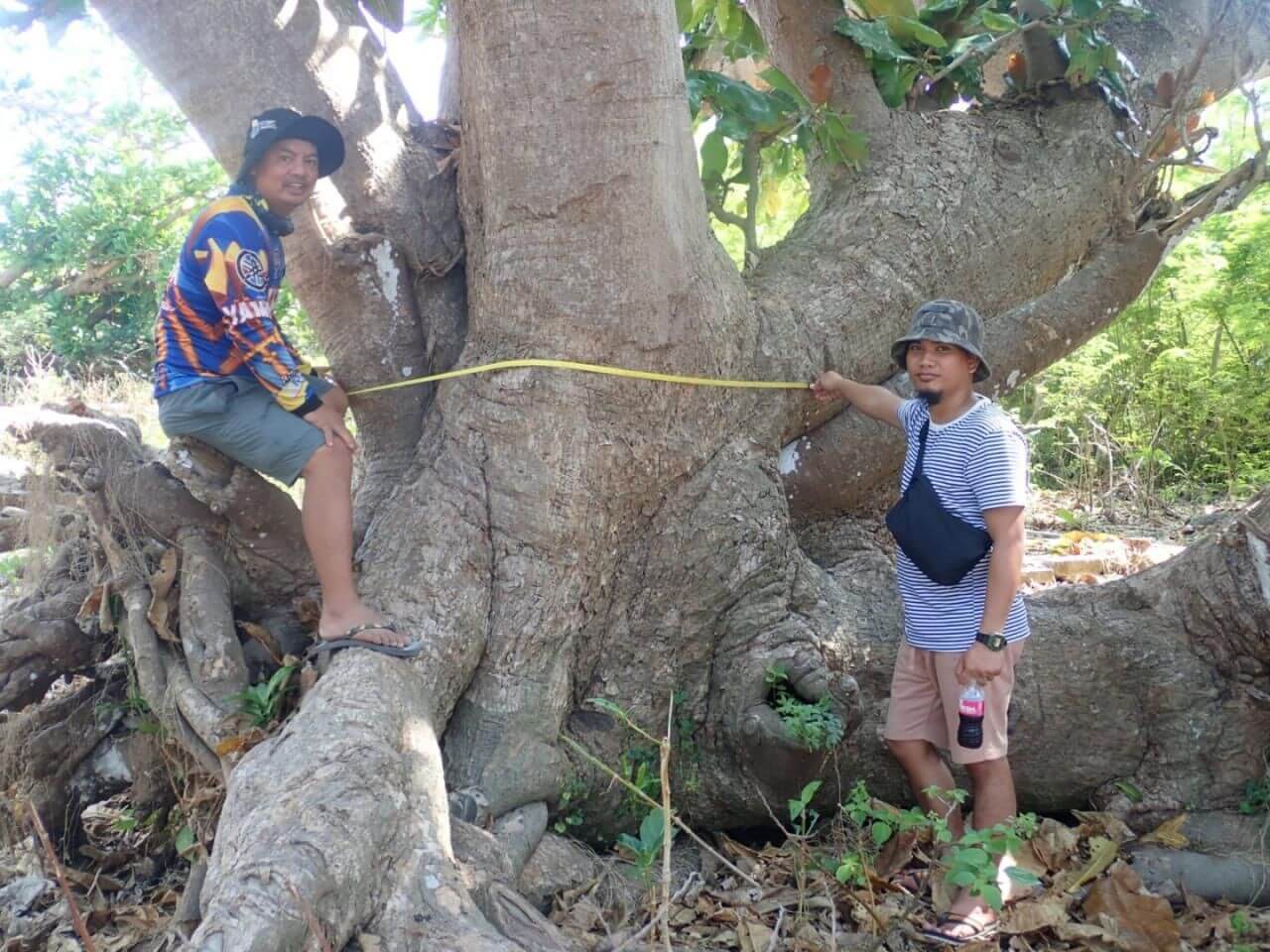Report on the Ecological Significance of Pag-asa Island’s Beach Forest and its Contribution to Sustainable Development Goals
Introduction
A recent scientific study conducted by the Department of Environment and Natural Resources–Ecosystems Research and Development Bureau (DENR–ERDB) has provided the first comprehensive analysis of the beach forest ecosystem on Pag-asa Island in the West Philippine Sea. The findings, published in the Philippine Journal of Science, highlight the ecosystem’s critical role in advancing several United Nations Sustainable Development Goals (SDGs), particularly those related to climate action, biodiversity, and coastal resilience.
Key Findings: Carbon Sequestration and SDG 13 (Climate Action)
The research reveals the significant capacity of the island’s beach forest to mitigate climate change, directly contributing to the objectives of SDG 13. Despite its modest size, the ecosystem serves as a vital natural carbon sink.
- Total Carbon Storage: The 32-hectare island’s forest stores nearly 10,000 tons of carbon dioxide (tCO₂).
- Comparative Impact: This stored carbon is equivalent to the annual emissions of approximately 2,000 passenger vehicles.
- Key Species Contribution: The study identified that mature, large trees are responsible for this high storage capacity.
- Barringtonia asiatica (botong) accounts for 85% of the total carbon stock.
- Calophyllum inophyllum (bitaog) contributes 9%.
These findings underscore the importance of preserving such ecosystems as a nature-based solution for achieving carbon neutrality and fulfilling commitments under SDG 13.
Ecosystem Services and Contributions to SDG 14 (Life Below Water) and SDG 15 (Life on Land)
The Pag-asa Island beach forest provides essential services that support both terrestrial and marine biodiversity, aligning with the goals of SDG 14 and SDG 15.
- Support for SDG 15 (Life on Land): The forest provides a habitat for 20 identified plant species from 19 families. The presence of hardy native trees like Barringtonia asiatica, Calophyllum inophyllum, and Terminalia catappa sustains terrestrial biodiversity and ecosystem functions.
- Support for SDG 14 (Life Below Water): By acting as a natural barrier, the beach forest stabilizes the shoreline. This function is crucial for preventing coastal erosion, thereby protecting adjacent marine habitats, such as coral reefs, from sedimentation and degradation.
- Coastal Resilience and SDG 11 (Sustainable Cities and Communities): The ecosystem serves as a primary defense against storm surges and rising sea levels, enhancing the resilience of the island and contributing to the safety and sustainability of its community.
Conservation Challenges and Policy Recommendations
The report identifies a significant threat to the continued delivery of these ecosystem services. Satellite data indicates a sharp decline in Pag-asa’s beach forest cover, from 11 hectares in 2017 to less than seven hectares in 2023. This loss directly undermines progress toward SDGs 13, 14, and 15. In response, researchers have proposed the following recommendations:
- Policy Integration: Integrate the protection and rehabilitation of beach forests into national climate and environmental strategies, including the National Greening Program.
- Climate Adaptation Strategy: Formally recognize the role of beach forests in national climate adaptation plans to enhance island resilience against climate-related hazards.
- Prioritized Reforestation: Focus future coastal reforestation initiatives on high-value native species like B. asiatica and C. inophyllum due to their exceptional carbon storage capabilities.
Conclusion
The scientific assessment of Pag-asa Island’s beach forest demonstrates that even small, remote ecosystems can make a substantial contribution to global sustainability targets. Its role in carbon sequestration, biodiversity conservation, and coastal protection directly supports the achievement of SDGs 11, 13, 14, and 15. The documented decline in forest cover necessitates urgent conservation action and policy integration to preserve this vital natural asset for climate action and sustainable development.
Analysis of the Article in Relation to Sustainable Development Goals
1. Which SDGs are addressed or connected to the issues highlighted in the article?
The article on the Pag-asa Island beach forest ecosystem directly addresses and connects to several Sustainable Development Goals (SDGs) due to its focus on climate change, biodiversity, and ecosystem conservation.
- SDG 13: Climate Action
This is the most prominent SDG in the article. The text explicitly states the coastal ecosystem is “quietly helping to fight climate change.” It quantifies the forest’s role in carbon sequestration (“stores nearly 10,000 tons of carbon dioxide”) and highlights its function in climate adaptation as a “first line of defense against storms and rising seas.” The call to integrate its protection into climate adaptation strategies further strengthens this connection. - SDG 15: Life on Land
The article is centered on a terrestrial ecosystem—a beach forest. It discusses the conservation of this habitat, the biodiversity it supports (“20 plant species from 19 families”), and the threats it faces from deforestation (“forest cover has declined from 11 hectares in 2017 to less than seven hectares in 2023”). The recommendation for “coastal reforestation efforts” and stronger conservation measures directly aligns with the goals of protecting and restoring terrestrial ecosystems. - SDG 14: Life Below Water
Although the focus is on a forest, its role as a “thriving coastal ecosystem” that helps “stabilize shorelines” directly impacts the marine environment. Protecting beach forests prevents coastal erosion, which in turn protects adjacent marine habitats like coral reefs and seagrass beds from sedimentation. Therefore, the conservation of this ecosystem is integral to the health of the marine environment. - SDG 17: Partnerships for the Goals
The article is based on the “first-ever scientific account” of the ecosystem, a result of research by scientists from a government agency (DENR–ERDB) published in a scientific journal. This represents a partnership between science and government to generate data and knowledge that can inform policy and conservation action, which is a core principle of SDG 17.
2. What specific targets under those SDGs can be identified based on the article’s content?
The article’s details point to several specific SDG targets:
- Target 13.1: Strengthen resilience and adaptive capacity to climate-related hazards and natural disasters.
The article supports this by describing the beach forest as a natural barrier that serves as the “first line of defense against storms and rising seas,” thereby enhancing the island’s resilience to climate impacts. - Target 13.2: Integrate climate change measures into national policies, strategies and planning.
This is directly addressed by the recommendation from the ERDB team that “beach forest protection be integrated into the National Greening Program and climate adaptation strategies.” - Target 14.2: By 2020, sustainably manage and protect marine and coastal ecosystems to avoid significant adverse impacts.
The article’s focus on a “coastal ecosystem” that helps “stabilize shorelines” directly relates to this target. The call for its protection is a call to action to manage and conserve a vital component of the coastal zone. - Target 15.1: By 2020, ensure the conservation, restoration and sustainable use of terrestrial and inland freshwater ecosystems and their services, in particular forests.
The entire article is a case for the conservation of the Pag-asa beach forest, highlighting its ecological value and the need for “stronger conservation measures.” - Target 15.2: By 2020, promote the implementation of sustainable management of all types of forests, halt deforestation, restore degraded forests and substantially increase afforestation and reforestation globally.
The article identifies a clear case of deforestation (“declined from 11 hectares in 2017 to less than seven hectares in 2023”) and mentions the importance of key species for “future coastal reforestation efforts.” - Target 15.5: Take urgent and significant action to reduce the degradation of natural habitats, halt the loss of biodiversity.
The decline in forest cover represents a degradation of a natural habitat for “20 plant species,” and the call for conservation is an urgent plea to halt this loss.
3. Are there any indicators mentioned or implied in the article that can be used to measure progress towards the identified targets?
Yes, the article provides several specific, quantifiable indicators that can be used to measure progress:
- Indicator for Carbon Sequestration (SDG 13, 15): The total carbon stock, measured in tons of CO₂. The article provides a baseline figure of “nearly 10,000 tons of carbon dioxide.” Monitoring this value over time can indicate the health and growth of the forest.
- Indicator for Forest Cover (SDG 15): The area of forest cover, measured in hectares. The article provides data points showing a decline “from 11 hectares in 2017 to less than seven hectares in 2023.” This is a direct indicator for measuring deforestation or reforestation progress.
- Indicator for Biodiversity (SDG 15): The number of plant species. The study identified “20 plant species from 19 families,” which serves as a baseline for biodiversity. Future studies could track this number to measure changes in the ecosystem’s health.
- Indicator for Policy Integration (SDG 13): The inclusion of beach forest protection in national policies. The recommendation to integrate this into the “National Greening Program and climate adaptation strategies” implies that the existence and implementation of such policies can be used as a qualitative indicator of progress.
4. Table of SDGs, Targets, and Indicators
| SDGs | Targets | Indicators Identified in the Article |
|---|---|---|
| SDG 13: Climate Action | 13.1: Strengthen resilience and adaptive capacity. 13.2: Integrate climate change measures into national policies. |
– Role as a “first line of defense against storms and rising seas.” – Total carbon stock (“nearly 10,000 tons of CO₂”). – Integration of beach forest protection into national climate adaptation strategies. |
| SDG 14: Life Below Water | 14.2: Protect and restore marine and coastal ecosystems. | – Function in stabilizing shorelines, which protects marine habitats. |
| SDG 15: Life on Land | 15.1: Conserve and restore terrestrial ecosystems. 15.2: Halt deforestation and restore forests. 15.5: Halt biodiversity loss. |
– Forest cover area in hectares (declined from 11 ha to <7 ha). – Number of plant species (“20 plant species”). – Carbon stock contribution by specific species (e.g., *B. asiatica* accounts for 85%). |
| SDG 17: Partnerships for the Goals | 17.6: Enhance access to science, technology and innovation. | – Publication of a scientific study by a government research bureau (DENR-ERDB) to inform policy. |
Source: insiderph.com







